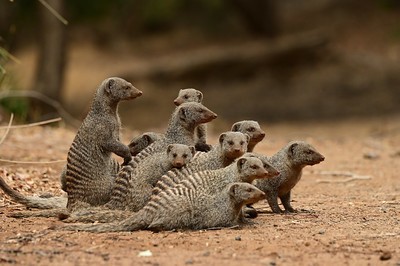
With infectious disease outbreaks, specifically, the coronavirus outbreak, topping the headlines worldwide, scientists are now under pressure to further understand the drivers influencing the pathogens' transmission to better foresee and control such disease epidemics.
In relation to this, a new study led by the College of Natural Resources and Environment professor, Kathleen Alexander explored the ways "that landscapes can influence the behavior of animals," promoting dynamics that either limit or encourage the widespread of infectious diseases.
Through observation on banded mongoose populace across several environments in Botswana, the team of researchers was able to obtain insight into how in which type of and behavior of animals interact to affect the spread of "novel tuberculosis pathogen" transmitted employing "olfactory communication behaviors."
The research which the journal, Frontiers in Ecology and Evolution published, was financially aided with an award received from the National Science Foundation's Evolution and Ecology of Infectious Disease program.
ALSO READ : Rare White Giraffes Killed in Kenya by Poachers
Banded Mongoose
Scent marking is what the banded mongoose use to communicate or deliver information to others, a fundamental fitness behavior in this species and many more.
More so, Alexander said, "scent marks are put into the environment," and comprise odor signals conveying information from one mongoose to another.
The novel tuberculosis pathogen the researchers discovered has importantly hijacked the communication pathways of the mongoose.
More so, as they transmit information to another mongoose, they can deliver the said pathogen, as well.
Incidentally, working through the Chobe Research Institute and Centre for the Conservation of African Resources: Animals, Communities and Land Use (CARACAL) that Alexander co-formed in Botswana, she and Carol Anne Nichols, a former graduate student used camera traps and radio collars that have remote sensors in earth sites to monitor the behaviors of mongoose.
In this manner, the researchers can observe the said animals sans affecting their behavior and can study in shielded park landscapes, urban settings, and other areas that have different characteristics.
The finding was an extensive data set of the behavioral instructions of mongoose across a range of types of landscape.
Research Findings
What they found, according to Alexander, is that type of land considerably influences the interaction of watchfulness-particularly watching for competitors or predators, using the scent-marking behavior.
This, the research head added, "Has the potential for pathogen transmission change and," where there is an elevation of scent marker, "superspreading landscapes" are created.
Furthermore, Alexander described the banded mongoose as social animals that live in territories, which is what's making this specific transmission method, as well as the findings very interesting.
She also added that infectious disease will keep on emerging as they've seen once more, with the novel coronavirus (COVID-19).
Their results, Alexander shared, recommends an urgency in terms of understanding the manner landscape types affect animal behavior, specifically that of the banded mongoose's, and the manner these interactions might rise or drop the possibility of the disease to be transmitted between humans and animals.
© 2026 ScienceTimes.com All rights reserved. Do not reproduce without permission. The window to the world of Science Times.












